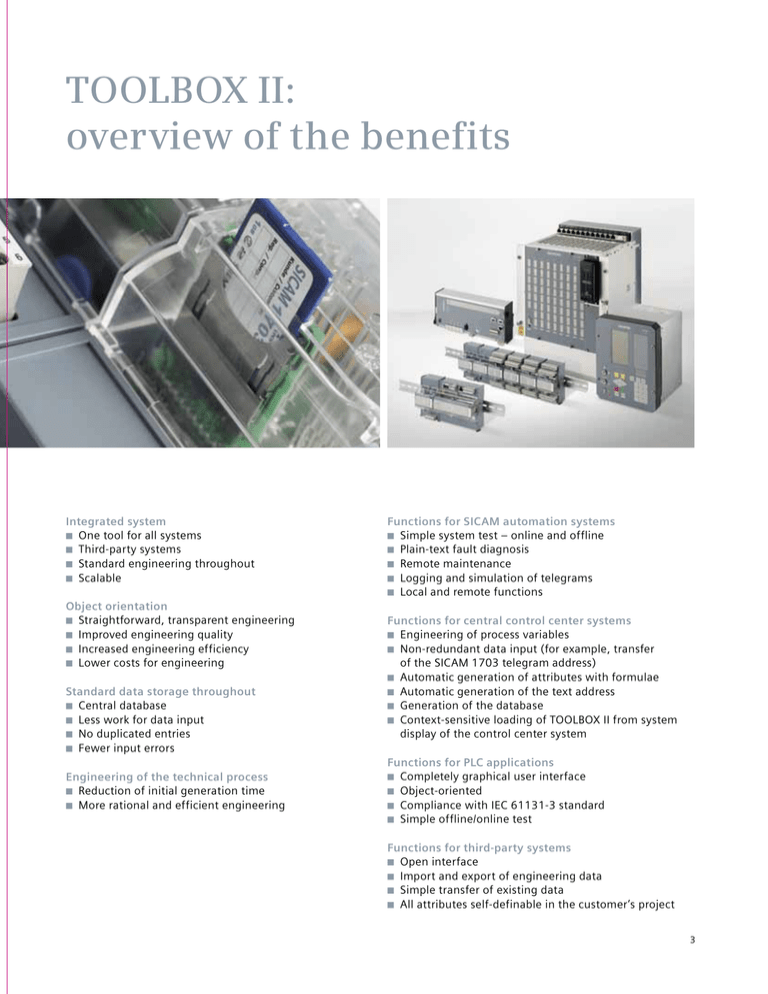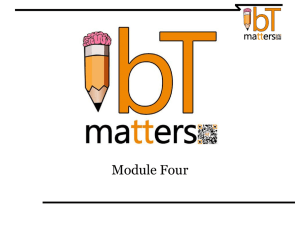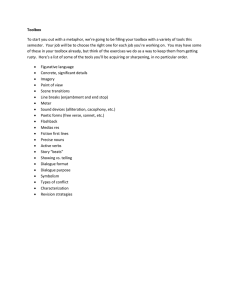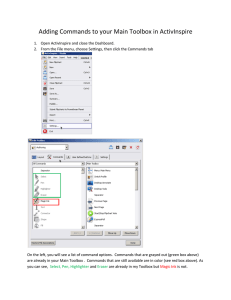
TOOLBOX II:
overview of the benefits
Integrated system
■■ One tool for all systems
■■ Third-party systems
■■ Standard engineering throughout
■■ Scalable
Object orientation
Straightforward, transparent engineering
■■ Improved engineering quality
■■ Increased engineering efficiency
■■ Lower costs for engineering
■■
Standard data storage throughout
Central database
■■ Less work for data input
■■ No duplicated entries
■■ Fewer input errors
■■
Engineering of the technical process
■■ Reduction of initial generation time
■■ More rational and efficient engineering
Functions for SICAM automation systems
■■ Simple system test – online and offline
■■ Plain-text fault diagnosis
■■ Remote maintenance
■■ Logging and simulation of telegrams
■■ Local and remote functions
Functions for central control center systems
Engineering of process variables
■■ Non-redundant data input (for example, transfer
of the SICAM 1703 telegram address)
■■ Automatic generation of attributes with formulae
■■ Automatic generation of the text address
■■ Generation of the database
■■ Context-sensitive loading of TOOLBOX II from system
display of the control center system
■■
Functions for PLC applications
Completely graphical user interface
■■ Object-oriented
■■ Compliance with IEC 61131-3 standard
■■ Simple offline/online test
■■
Functions for third-party systems
Open interface
■■ Import and export of engineering data
■■ Simple transfer of existing data
■■ All attributes self-definable in the customer’s project
■■
3
Published by and copyright © 2011:
Siemens AG
Energy Sector
Power Distribution Division
Energy Automation
P.O. Box 4806
90026 Nürnberg, Germany
For more information, please contact
our Customer Support Center.
Phone: +49 180/524 70 00
Fax:
+49 180/524 24 71
(Charges depending on provider)
E-mail:support.energy@siemens.com
Order No. E50001-G720-A310-X-4A00 | Printed in Germany |
Dispo 06200 | c4bs No. 7440 |
TH 345-101096 | RP | 482509 | WS | 09112.0
Printed on elementary chlorine-free bleached paper.
All rights reserved.
Trademarks mentioned in this document
are the property of Siemens AG, its affiliates,
or their respective owners.
Subject to change without prior notice.
The information in this document contains general
descriptions of the technical options available, which
may not apply in all cases. The required technical
options should therefore be specified in the contract.
www.siemens.com/energy
TOOLBOX II
The integrated engineering system
Answers for infrastructure.
TOOLBOX II:
one tool for all your needs
Control system
TOOLBOX II
TM 1703 ACP
NTP
Central unit:
Local input/
output
■ Central
processing
■
AK 1703 ACP
■ Data node
■ Front end
■ Gateway
TM 1703 ACP
Telecontrol substation:
■ Local processing
■ Decentralized
data acquisition
TM 1703 ACP
Turbine controller
■ Power plant
management
■ Automation and
control
■
TM 1703 mic
TM 1703 emic
IEC 60870-5-104, IEC 61850
Radio, fiber-optics, cable etc. …
IEC 60870-5-101
Multi-point traffic
Configurations
2
AK 1703 ACP
Station control unit:
■ Process interfacing
(serial, wide)
■ Node function
■ Automatic
functions
TOOLBOX II:
more performance with one tool
Engineering today has become
an important cost factor,
not only in the creation of new
plants but also for maintaining
existing facilities and updating
databases.
With the integrated engineering
system TOOLBOX II, we offer
you a comprehensive and costsaving solution for these
applications.
An integrated tool
TOOLBOX II provides you with all functions for integrated
and standard engineering throughout the entire plant,
including:
■■ Data collection, data modeling, configuration,
and parameterization
■■ Engineering of process information for the automation
and central control-room systems
■■ Administration of the systems and individual
parameters of third-party manufacturers
TOOLBOX II is an ideal tool for plants and systems
of all sizes.
Current operating systems supported
In addition to Windows XP Professional and Server 2003,
TOOLBOX II V 5.0 also supports the Windows Vista,
Windows 7 Professional, and Windows Server 2008 R2
operating systems.
Object orientation: working faster and more reliably
With the introduction of object orientation, the designer
can describe actual units and equipment in the project
planning process and can employ them in the engineering
process as defined objects. These can, for example, be
individual components like pumps and circuit-breakers,
but they can also be larger units like branch feeders.
In particular, when a plant is made up of a multitude of
primary technical units and equipment of identical type
(for example, transformer substations, hydropower plants,
and pipelines), object orientation offers the potential for
substantial savings.
In parallel, the error rate also drops, because by
generating process-technical objects with TOOLBOX II,
equipment design moves to the background. This means
that designers no longer need to be concerned with
a large number of individual signals. Instead, they can
concentrate on their actual task, which is the engineering
of the plant. In order to make full use of this advantage,
the objects can be defined with absolute freedom, with no
restrictions with respect to industry-specific applications.
4
Server/client configuration
Work the way you want – in a team, alone, with staggered
workperiods, simultaneously.
TOOLBOX II leaves all the options open to you in terms
of networkability and work-sharing work modes, from
single workstations to complex network solutions in which
several designers work on several projects in parallel. The
work-sharing function even allows a number of designers
to work simultaneously on a project even if the individual
TOOLBOX II PCs are not networked together. The shared
databases are then merged at a later time in a simple,
user-friendly manner.
Engineering in the web
You can also make use of TOOLBOX II’s many different
functions without restriction on the Internet or intranet,
with the same ergonomic user interface as your local
installation. The Web functions integrated in TOOLBOX II
allow users to work in Internet Explorer with no familiarization necessary. For this application, TOOLBOX II does
not even need to be installed locally on the control PC.
All functions for SICAM 1703 run on the corresponding
Windows terminal server and can be operated using
a web browser.
Once entered, always up-to-date
The core element of TOOLBOX II’s data management is
a central database to which all TOOLBOX II tools have
access and in which all information is stored.
The advantage is self-evident. Once information has been
entered, it is available to all employees on a project and to
all tools immediately, and is kept up-to-date at all times.
This reduces the error rate, avoids duplicated entries, and
so cuts engineering costs.
Server/client
configuration
TOOLBOX II
Client 1
TOOLBOX II
Client 2
TOOLBOX II
Server
LAN/WAN
TOOLBOX II
Client 3
Web engineering
configuration
Remote
Client 1
Remote
Client 2
TOOLBOX II
Server & Web server
LAN/Internet
Remote
Client 3
TOOLBOX II server/client configurations
5
Functions for the SICAM automation systems
In a SICAM 1703 automation network, TOOLBOX II enables
project planning, loading, system diagnosis, system testing,
and documentation of the automation and telecontrol
functions for local and remote automation units. All
functions can be executed via the automation system’s
communication pathways (in other words, with­out
a separate cable). This makes it a very simple matter to
test the plant and to start it up. TOOLBOX II’s integrated
diagnostics options make it possible to locate and correct
any errors quickly and reliably, thereby considerably
increasing the availability of the system as a whole.
In the event of an error, the detailed diagnosis gives you
comprehensive plain-text information and informs you of
possible causes and ways to correct them. Remote maintenance allows access to automation systems by phone, via
modem, ISDN, TCP/IP, and other paths from any location
whatso­ever, and therefore lays the foundation for
corresponding services. For data simulation purposes,
telegrams of any kind can be defined in a menu-guided
procedure and in this way simulated in the automation
system. Logging points can be selected with graphical
support in order to trace the data flow. Corresponding
telegram filters ensure that only the relevant telegrams
are displayed for each test.
PLC applications
The linking and control applications are created in
TOOLBOX II with CAEx plus. This efficient tool is an
attractive combination of a fully graphical user interface
and intuitive operation, which results in short familiari­
zation periods and minimized expenditures for training.
CAEx plus is fully integrated in TOOLBOX II and enables
you to generate IEC 61131-3-compliant application
programs easily and efficiently. Using the standard function plans enables fast, error-free programming with
standardized application programs. The transparent,
clearly organized operating structure ensures fast,
efficient work that is further enhanced by a host of
easy-to-use functions. Examples of these functions are
the project explorer, the intuitive function plan editor, the
navigator, and documentation management. The detailed
online help function provides assistance at all times in
case any aspects are unclear. CAEx plus also includes
comprehensive and user-friendly test options. The purpose of the offline test is to test the application program
in near-real time – regardless of the automation system.
The program can then be tested with the automation
system in the online test.
Functions for central control-room systems
The process data points in the central control-room
systems and local HMIs (like SICAM PAS CC) and their
attributes can be defined and parameterized with
TOOLBOX II. Attributes are taken over from the
SICAM 1703 automation system without redundancy,
thanks to the use of TOOLBOX II references. Among other
things, that frees the designer from having to enter the
telegram address for the central control-room system.
The application of TOOLBOX II formulae also offers the
option of automatically calculating the central controlroom system’s attributes, which speeds up the engineering process and cuts the error rate to a minimum. The
text address is also generated automatically.
Functions for third-party systems
The open interface to third-party systems of any kind is an
important feature of TOOLBOX II. Data can be exported
and third-party data imported via this interface. Exported
data can be converted with any kind of program for possible automatic post-editing. Importing of third-party data
can also be implemented using batch control, in other
words, without actually using TOOLBOX II.
In addition to storing individual attributes, signals and
any higher-value objects can also be created: for example,
a branch circuit, pump, or circuit breaker. This also makes
it very easy to transfer old data into TOOLBOX II. It is also
possible to define and administer third-party system para­
meters as well as general parameters. The designer can
personally define the attributes of the customer project,
for example, the parameters of third-party manufacturers.
Aside from all TOOLBOX II standard processing operations,
these self-defined parameters can also be used, for
example, for processing dimensions, for references and
formulae, and for work-sharing engineering.
6
TOOLBOX II (Version 5.0)
6
M
F
7
0
5
0
–
–
A
0
License
Single site (LIGHT)
0
Single site (FULL)
1
Server
3
Update and upgrade
4
Special
6
Package
A
No package
TOOLBOX II – Standard
(=EM II & PSR II & OPM II & CAEx plus)
B
TOOLBOX II – Basic
(=EM II & PSR II & OPM II)
C
TOOLBOX II – Administration
(=EM II)
D
TOOLBOX II – Maintenance
(=EM II & PSR II)
M
Update LIGHT
L
Update FULL
F
Upgrade
G
Add-on packages
No add-on
A
TBII Live update
L
TBII_SERVER/TBII Update_SERVER
No server
0
2 users
2
3 users
3
5 users
5
10 users
6
25 users
7
TBII_WEB-Basic/TBII_Update_WEB
No WEB
0
2 users
2
3 users
3
5 users
5
10 users
6
25 users
7
TBII_WEB-CAEx plus
No WEB-CAEx Plus
0
2 users
2
3 users
3
5 users
5
10 users
6
25 users
7
TOOLSET upgrade
A
No toolset
TBII_EM II
A
E
TBII_PSR II
A
S
TBII_OPM II
A
P
TBII_CAEx plus
A
C
X
TBII_CAEx II
TBII_Upgrade_EM II Light
Full
G
TBII_Upgrade_PSR II Light
Full
G
S
G
P
TBII_Upgrade_OPM II Light
Full
TBII_Upgrade_CAEx plus Light
TBII_Upgrade_CAEx II Light
Full
Full
E
G
C
G
X
Extra
TBII Dongle Exchange CAEx plus
6
M
F
7
0
0
0
–
5
H
A
0
0
–
0
A
C
0
TBII Dongle Exchange CAEx II
6
M
F
7
0
0
0
–
5
H
A
0
0
–
0
A
X
0
7




